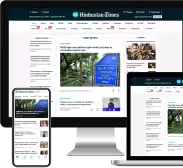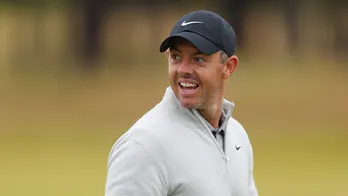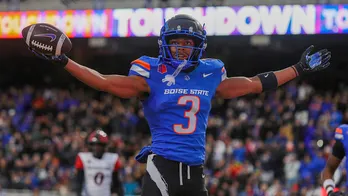Wrestlers’ protests show there is little to protect athletes
This wrestlers’ protest, unprecedented in Indian sporting history, has exposed to a wider public every fault line and fracture in our sporting structures. Along with the absolute paucity of institutional safeguards for young girls and boys against predatory officials and coaches and the lack of robust complaint redressal mechanisms, what is also palpable by its absence is the athletes’ collective voice. The Indian athlete, no matter how successful, has – or rather has been made to have - very little agency.  PREMIUM
PREMIUM
When the wrestlers returned to Jantar Mantar last month, the Indian Olympic Association’s (IOA) first-ever, newly launched Athletes Commission (AC) had a chance make a first mark. The AC showed itself up as ineffectual –disturbingly, deliberately so. Earlier this month, Hindustan Times reported that an AC member had blocked those who wanted to issue a public statement of support for the wrestlers. The blocker cited an AC-regulation privacy clause.
Olympic champion Abhinav Bindra, a member of the International Olympic Committee (IOC)’s athlete commission, says athlete representatives have a “duty and moral obligation to do everything we can for the well-being and safety of the community, and importantly, ensure that the athletes' voice is heard.” In response to India’s first-ever public athletes protest this century, IOA’s AC chose “no comment”. Abdication of responsibility and dereliction of duty right there.
Since its inception last November, controversies have dogged this AC. A few hours before the AC elections, a majority of candidates’ names vanished and a late night ‘unanimous’ verdict was declared. Shooter Gagan Narang, a member of the AC, then became IOA vice-president, a conflict of interest due to a flaw in the new IOA constitution. Narang must pick his team: either IOA office-bearer or athletes’ rep.
ACs in Indian sporting federations, for the majority, are box-tickers. The WFI’s AC has Sakshi Malik and Bajrang Punia, now protest leaders, as members. They had to go over WFI’s head as their main complaints were against their powerful president. The idea of a players’ body is seen as anathema, a direct challenge to federations. Cricket’s three attempts at an independent player-driven association failed. Post Lodha, a mandatory players association was set up in 2019, with limited powers. The Indian Cricketers Association is restricted to retired players.
The other Indian sport where athletes have a say is the Professional Golf Tour of India. PGTI is a players’ organisation with a players committee looking into contractual and financial disputes. The only major Indian sport with a fully functioning, independent players association, is football.
The Football Players Association of India (FPAI) was created in 2006, Bhaichung Bhutia its founding president. In 2011, it was affiliated with FIFPRO, the worldwide union of professional footballers. One of its early challenges was communicating the importance of collective representation to players worried that signing up with FPAI meant annoying the clubs.
FPAI was also cold shouldered by All India Football Federation (AIFF). Siddharth Bhattacharya, senior manager FPAI, says, “the previous government in AIFF was very apprehensive that there was this union but now we are trying to set up a dialogue and work on a standard contract for players across both leagues.”
Every Indian player in ISL and I-League division 1 is an FPAI member, which handles contractual disputes over terms and pay, provides post-retirement advice and can negotiate on behalf of players without agents. The FPAI’s board consists of former and current players, ex-international coach Renedy Singh is president and India captain Sunil Chetri one of four vice-presidents.
Bhattacharya and All India Football Federation (AIFF) secretary general Shaji Prabhakaran say vibrant player bodies are necessary for all sports. Prabhakaran says, “players are the vital element of any sport. If their rights are protected, if they have a platform to voice their grievances, it helps a sport grow in a very balanced way.”
Player associations in professional sport are common around the world, but Bhattacharya says, “India is very bureaucratic, people don’t want to give their power to anybody else and they don’t want a voice to be raised. Not that it must be raised in every matter but when a voice needs to be raised, they don’t want that to happen.”
FPAI’s challenge now lies in signing on women players from their tiny ecosystem. India’s women pros number around 40-50 who play a month-long league. The women are hesitant to join fearing reprisal from clubs or being booted out of the national team.
In the light of the wrestlers’ protest, their manhandling by police and scenes of barricades being welded together, Indian football’s debates sound as if they come from another country. Of course, the essential professionalism of football – the contract between player and club – is far removed from the sports ministry, SAI camps and heavy-handed federations.
In Hockey India, even after the Odisha government windfall – the latest being Rs. 431.12 crore to be released between 2023-2033 – there is no movement towards a match-fee structure or professional leagues with contractual payments. Ad-hoc ‘cash incentives’ are nothing but feudalism disguised as largeheartedness.
One last cruel twist around Indian sport’s independent voices. In July 2016, the Olympians Association of India was launched for the welfare of Olympians with the creation of a website to help them “access information on outreach programmes, career management, skill development, health insurance, pensions, mentorships, legal advice and support.” That website link currently “can’t be reached”.
Enjoy unlimited digital access with HT Premium
Subscribe Now to continue reading Start 14 Days Free Trial Already Subscribed? Sign In
Disclaimer: The copyright of this article belongs to the original author. Reposting this article is solely for the purpose of information dissemination and does not constitute any investment advice. If there is any infringement, please contact us immediately. We will make corrections or deletions as necessary. Thank you.







